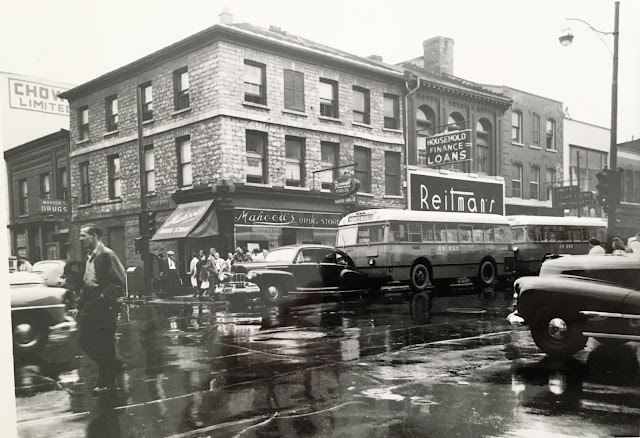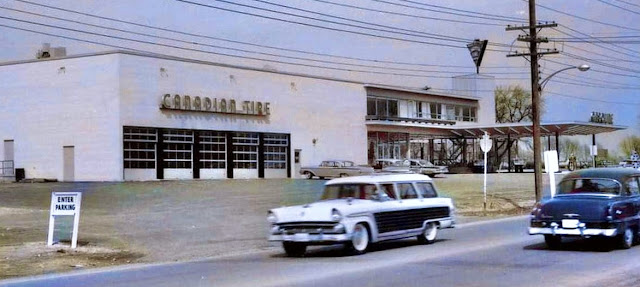Also on display were many frames showing prisoner-of-war mail to and from Fort Henry during both world wars.
Saturday, 24 August 2024
Kingston History - Pushing the Envelope(s)
Also on display were many frames showing prisoner-of-war mail to and from Fort Henry during both world wars.
Sunday, 18 August 2024
The Buses of Kingston, 1930-1962
Saturday, 17 August 2024
Buses and Broadcasts in Kingston - John Carey

John explained that he initially became a bus mechanic because his father advised him, "Learn a trade or stay in school". John was not too keen on school, having attended 'Regi' because his mother insisted upon it. One day during the early war years, a neighbour took John and his father to the Colonial Coach Lines bus shop, and John thought it was something he'd enjoy doing. John enrolled in trade school in Toronto's Kensington Market - a former elementary school plus addition on Nassau Street. While there, John worked at Gray Coach's small service garage four nights per week to hone his trade, monitoring idling diesel buses overnight (oil pressure and 450 rpm).
On June 16, 1954 John started with Colonial as summer help in their Kingston garage. John was 16 years old at the time, so although he couldn't drive on city streets, he was able to move the buses around the service area. In December 1954, John formally started as an apprentice at Colonial, staying until 1960. In that year, Colonial closed its Kingston garage, located behind its terminal at the traffic circle, to consolidate operations in Ottawa.
John got to know noted Kingston broadcasting personality Brian Olney while in a band in the 1950s, spurring his interest in broadcasting. Beginning in 1957 John worked as a part-time radio operator for CKWS, and went full time for CKWS-TV downstairs at their 170 Queen Street building in 1960. After spending 14 months at CJOH in Ottawa, John worked at CTV Toronto from 1962-1965, then moved to Peterborough where he worked for CHEX for five years. In 1969, he returned to Kingston as sales manager for CKWS for the next four years. In charge of the Kingston Whig-Standard classified ad department, he went on to work at CKWS selling radio ad time, and then four years at CKLC collecting bad accounts, John explained it was necessary to move around in broadcasting at the time! Interstingly, John obtained his Stationary Engineer certificate from Kingston's St Lawrence College in 1982, studying in the mornings and spending time monitoring several Kingston utility stations.
John had known Dick Lumb for a long time. Dick's grandfather, father Mel and uncle Gord were principals in the local marine service firm Millard & Lumb. Dick was involved with re-tubing Canadian Pacific 1201 for the National Museum of Science and Technology excursions (operated by the Bytown Railway Society). As a result, they were given a unique opportunity. In 2003, John and his uncle Dick were able to visit the Canada Science & Technology Museum (Ingenium) artifact warehouse to visit 1947-built GM 3703 bus 4756 in restored Provincial Transit colours. John said, "Back in the saddle again, 47 years later!" (below and top photo):
I'm grateful to John for sharing so much information with me, regarding Kingston's seldom-seen public transit history. John is understandably concerned that these artifacts will be preserved for future historians as well.
Tuesday, 13 August 2024
Bus Stations in Kingston

Passengers boarded buses on Montreal Street, then proceeding up or down Princess Street to Toronto and Montreal, respectively. Between runs, buses were stored across Queen Street, now a city parking lot. The PWOR Armoury's roof is visible in the background (top photo) in which one bus route-sign indicates 'RCAF'. Buses were serviced in the centre of the Princess-Montreal-Queen city block, accessed through an archway on Montreal Street near David's Lunch. Once through the archway, the buses would swing around, be filled up with gas, then exit again.

















































